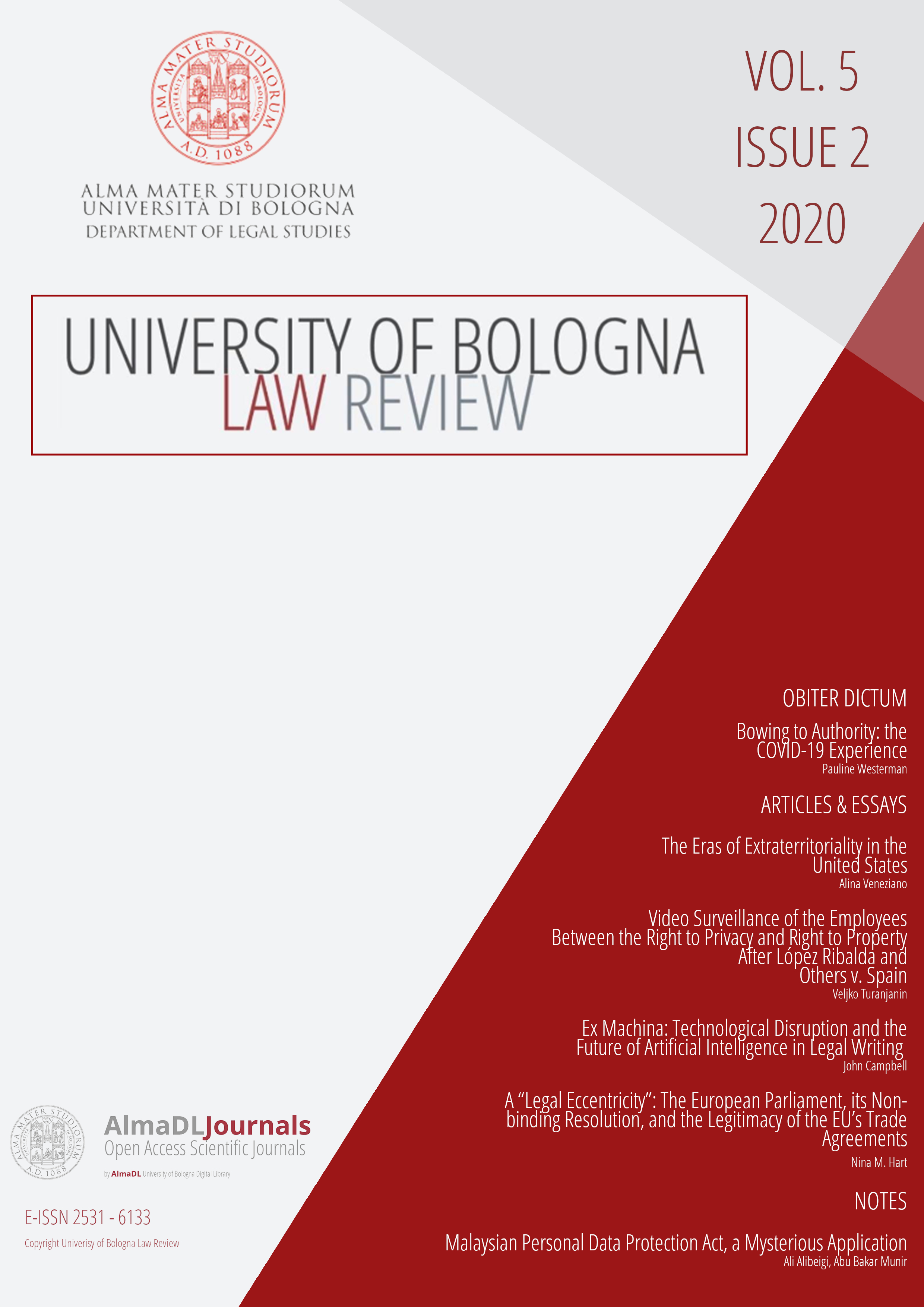Video Surveillance of the Employees Between the Right to Privacy and Right to Property After López Ribalda and Others v. Spain
DOI:
https://doi.org/10.6092/issn.2531-6133/10514Keywords:
video-surveillance, employee, illegally obtained evidence, human rightsAbstract
The tension between safety and privacy has become an important issue in the modern world. Video surveillance systems are indeed powerful tools for fighting crime on the one hand, and for the protection of property from theft on the other. The European Court of Human Rights (ECtHR) has examined the issue of video surveillance in many of its decisions. In this work, the author analyses the issue of video surveillance over employees and its influence on fundamental human rights and freedoms. He elaborates upon the ECtHR’s case of López Ribalda and Others v. Spain in order to identify the balance between the right to privacy and the right to property. This is a case from the civil law, but with elements that could may be used in the criminal proceedings. Furthermore, it is important to determine when exactly the video footage of employees may be used as evidence in criminal proceedings. After the introductory remarks, the author briefly deals with the facts of the above case and explains the basic applicable international legal acts. He then observes the issue of video surveillance from two points of view – those of Article 8 and Article 6 of the European Convention on Human Rights and Fundamental Freedoms (ECHR). Finally, he concludes that the ECHR took the right direction in establishing the balance between the protection of property and the right to privacy.
Downloads
Downloads
Published
How to Cite
Issue
Section
License
Copyright (c) 2020 Veljko Turanjanin

This work is licensed under a Creative Commons Attribution 4.0 International License.








